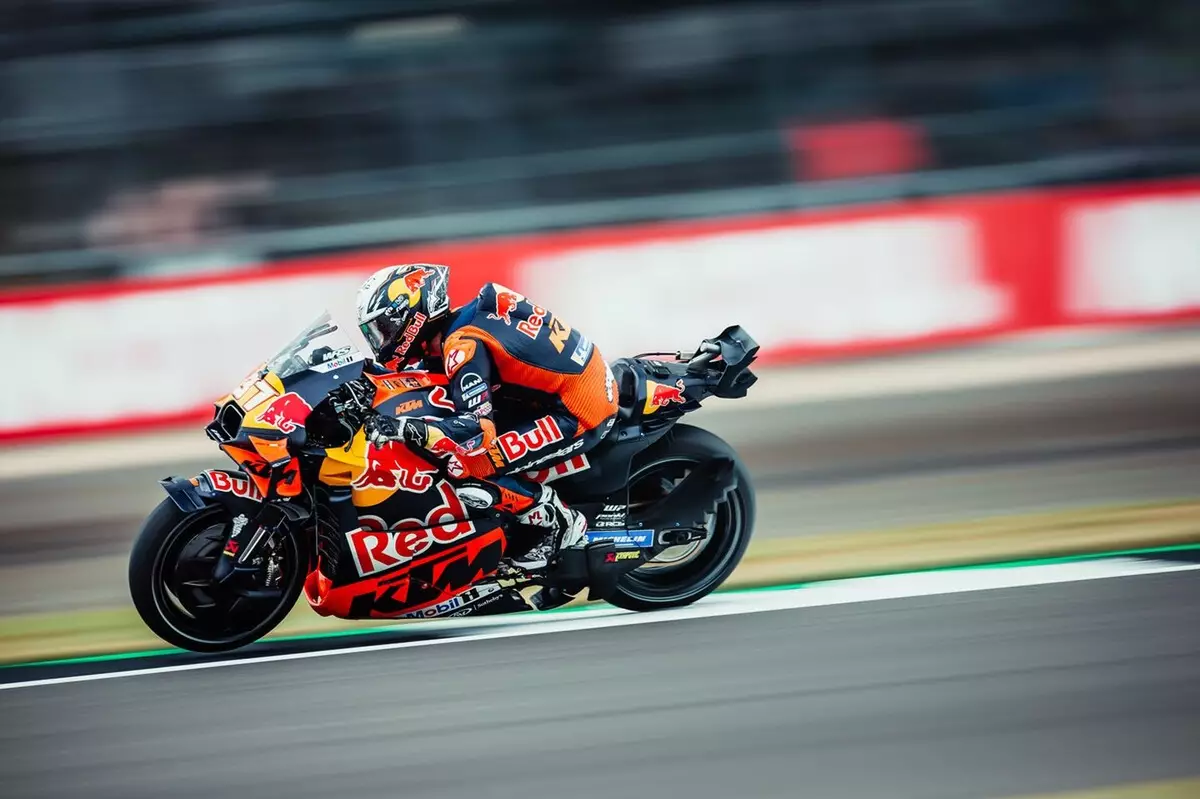As the 2025 MotoGP season unfolds, KTM’s performance remains inconsistent, showcasing highs and lows that have not gone unnoticed by fans and analysts alike. The disappointment within the factory team is palpable, reflecting in the riders’ standings; Pedro Acosta ranks ninth, while his teammate Brad Binder sits in 14th place. Both riders have voiced concerns, hinting at deeper issues within the team’s operations and development strategies. This scenario begs the question: is KTM simply weathering the storm, or is the storm indicative of a more significant turbulence ahead?
Acosta’s comments reveal a cautious optimism that makes sense in the current context of MotoGP. Having previously secured podium finishes at Aragon, he understands the fierce competition that exists, particularly from elite riders like Francesco Bagnaia and Alex Marquez. Acosta’s realistic outlook—focusing on a top-five finish rather than dreaming of victory—speaks volumes about the pressure facing the riders to deliver results. They are not only competing against the manifold challenges on the track but also navigating their internal struggles within the KTM framework.
Qualifying Woes and Technical Challenges
Specific issues with qualifying have emerged as a critical sticking point for KTM this season. Acosta’s unfiltered assessment that KTM’s qualifying performance was “a disaster” illustrates the frustration felt within the team. Starting positions are pivotal in MotoGP, and the failure to secure a top grid spot can significantly impede a rider’s chances for success. By placing both riders deep in the field during qualifiers, the team sets them up for uphill battles that require extraordinary efforts to overcome.
Compounding the problem is the apparent lack of consistency in performance. Acosta’s straightforward critique of Friday’s performances as subpar indicates a broader trend of unpredictability that has plagued the team. The Saturday qualifiers seem to signal difficulties reforming an efficient race strategy, which is essential for challenging the front-runners. The weight of mechanical shortcomings, short comings in cornering speed, and overall rideability also looms large as both Acosta and Binder strain for an edge against their rivals.
Long-term Strategies and the Road Ahead
To add complexity to the current scenario, KTM’s long-term vision for the team has come under scrutiny, particularly in light of their focus on future regulations for the year 2027. This strategic pivot presents both a silver lining and a potential pitfall. On one hand, Binder’s positive remarks regarding his visit to KTM’s headquarters highlight the organization’s commitment to technological advancement. By collaborating with engineers and weighing in on the development of future motorcycle components, the riders are actively engaged in shaping their competitive edge.
However, embracing a long-term perspective could come at an immediate cost. The uncertainty surrounding KTM’s participation and competitive stance raises eyebrows about their ability to maintain momentum in a fiercely competitive environment. Other teams are rapidly advancing within the current framework, which pits KTM at risk of losing ground when they should be fighting for relevancy in today’s races.
KTM’s acknowledgment of areas for improvement, particularly in maneuverability and cornering, signifies awareness but begs for urgency. Improvement is not just a goal—it is a necessity for the brand to avoid being overshadowed as the sport progresses. If the 2025 season sees KTM relegated to the back of the pack while they wait out the development cycle for 2027, this strategy could backfire, alienating both fans and sponsors who favor immediacy over potential.
The Importance of Adaptability
In light of these obstacles, adaptability becomes central to KTM’s success. The team must learn to transition quickly, addressing weaknesses while simultaneously planning for future upgrades. The MotoGP landscape evolves rapidly, with teams investing heavily in developing cutting-edge technologies and racing strategies. Therefore, waiting for 2027 to bear fruit might not be the best course of action for a team striving to capitalize on current opportunities.
Both Acosta and Binder express a shared commitment to improving their standing, but without a more agile response to immediate challenges, it seems that KTM might be caught in a cycle of reflection rather than action. Striking the right balance between immediate performance and long-term innovation might be crucial for repositioning themselves among the elite in MotoGP. The impending years could determine whether KTM finds itself racing ahead or lagging behind in the fast lane of Motorcycle racing.

